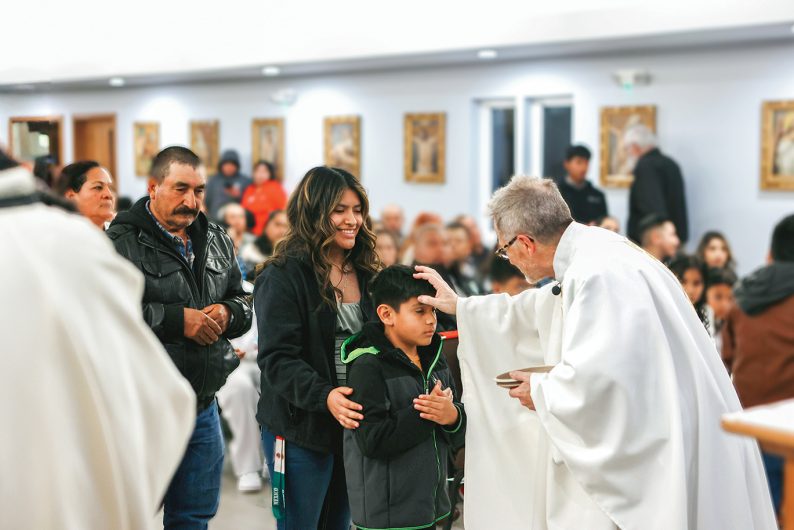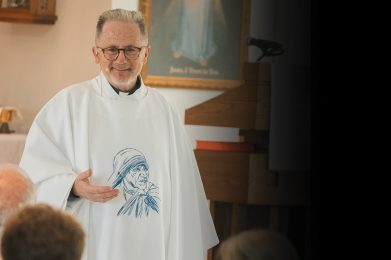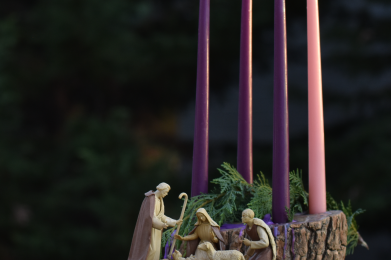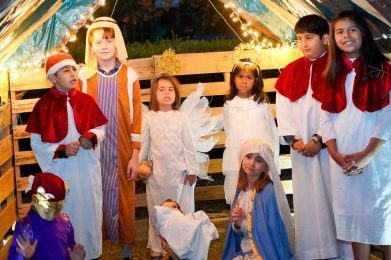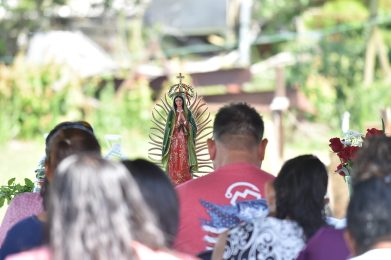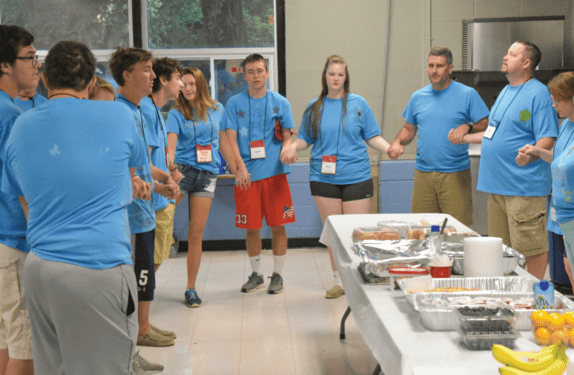You might think that the immigration debate wouldn’t affect the rural places in our nation. But actually it’s just the opposite. The home missions have an international flavor these days.
For one thing, Glenmary itself is growing with immigrants—from Kenya, Uganda, and Mexico—who are hearing God calling them to serve the home missions in the United States. But we also have a growing presence of international immigrants in our mission areas, from lots of countries. They are Catholic, and in many ways they are typical of the US immigrants who have built this country since the 1500s. They’re hardworking, family oriented, and here for freedom and opportunity. Like Europeans and others before them, they need parishes to live their faith fully.
“I don’t have an official headcount, but from my observation, the majority of Glenmary mission parishes are [majority] Hispanic Latinos,” says Father Steven (Steve) Pawelk, whose most recent mission assignment was completed in a Tennessee parish church built by the local Latino community. “The exception would be Georgia. Even there, though, is a wonderfully diverse population that includes Hispanics.”
Are all of these people fully documented legal residents? Father Steve offers a perspective we seldom hear: “When you come to the Church, do I ask you for any papers? Do I say, ‘Where’s your baptismal record?’ Or, ‘Can I see your license? Are you really from New York?’ We just don’t do that. We have a registration form that says, Give us your new address. What sacraments have you received? What can we do to help you?”
Glenmary’s concern is the spiritual and physical needs of those who come to the church doors and for those throughout the counties we serve. “How can we help them grow in Christ and become good disciples of Jesus?” asks Father Steve, and adds, “Our citizenship for the Church is called our Baptism.”
A matter of justice
Polly Duncan Collum is a longtime co-missioner with Glenmary. Her job now, as director of Justice, Peace, and Integrity of Creation, is to help Glenmary parishes to understand and act on the social mission.
“I’ve been with Glenmary for a long time,” she observes. “Twenty-five years ago, when I was in Ripley, Mississippi, it was during the beginning stages of an influx of Hispanic Catholics into our mission areas,” she says. “Some of our immigrant parishioners have been among us for 10 years, 20 years, 25 years. They’ve bought homes; they’ve been paying taxes. They have American citizen children. They’re very involved in the community and the schools. The majority of those folks do not have a legal status because there has not been a legal pathway for them.”
Today, without legal status, she says, these Glenmary parishioners fear deportation. “That’s why Glenmary needs to care about this national issue,” she insists.
It’s a national issue that particularly touches the Catholic Church. In a new book The Future of Catholicism in America, Dr. Maureen K. Day and colleagues observe many population trends in our Church nationally, including our changing ethnic composition. In 1987, White non-Hispanic Catholics were 86% of Catholics nationally. The latest statistic, reported by the US bishops, is that by 2021 Latinos were 40% of US Catholics. The youngest Catholics are more than 50% Latino.
The same trend is true, perhaps even moreso, in the home missions.
Father Bishop’s approach
Glenmary is following the leadership of Pope Francis and the US bishops on the immigration question. “It is a question of justice,” insists Polly. “Our bishops, again and again, have said it’s an unjust system,” and adds, “A lot of the people who are in government or law enforcement in our counties don’t want to see these people deported. Now that’s not everyone. But they don’t want to because these folks are local citizens.” These small communities easily see the ways the immigrants make a positive difference in their area.
“We care about real live human beings, not the abstractions even of immigration policy,” Polly reminds us. “You know, Matthew 25, to welcome the stranger, is at the heart of our faith.” Yet, the Church strongly affirms the right of nations to protect their borders, so we need to find some balance. But protecting against military invasion, as in Ukraine, for example, is not the same as refusing welcome. “People have a right to migrate to feed their families,” says Polly. “Rich nations have a greater moral responsibility than poor nations to welcome them. These are teachings from our Church.”
Right now there is a need in our Glenmary missions to serve people who are under threat of deportation, says Polly. “Just like we serve people who are hungry, who are homeless, who are in a situation of domestic violence, this is a social need. And we are called to do what we can to help them.”
That’s in the spirit of Glenmary founder Father William Howard Bishop, both she and Father Steve would agree. “Father Bishop, way back, was reading the signs of the times,” says Polly. “He looked around and said, ‘What about all these people in the rural South who have no access to the Eucharist, who have no access to the sacraments and into a Catholic presence in all that Catholic Christianity brings?’ Now, many years later, this concern about undocumented immigrants in particular is one of our signs of the times.”
Says Father Steve, “For Glenmary, immigration is not a Democrat or Republican issue, it’s a people issue. These are the parishioners in our pews. These are the people living in our counties. How can we be Jesus Christ to them? The Glenmary invitation to everyone is to join us in this mission, to be the caring hands and feet and heart of Jesus for others. That’s really all we’re trying to do.”
– John Feister
This article first appeared in the Spring 2025 issue of the Glenmary Challenge.

